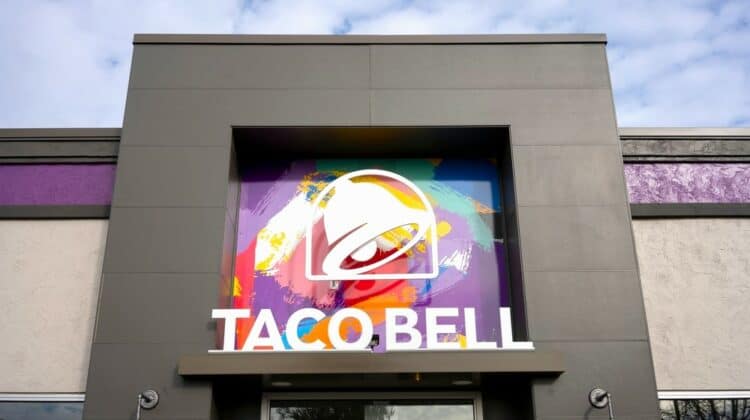
As any PC gamer knows, graphic cards matter.
Your ability to play a game on your computer tends to come down to the amount of RAM your computer has and the graphics your system can handle.
If either of those isn’t up to par, then your computer is going to struggle playing the game.
The problem with building your own PC or even buying a pre-made PC is that graphics card are expensive.
Without all the issues in the world increasing the prices, graphics cards have always been on the expensive side.
The average price for graphic cards ranges from $100 to $600 with the newest models sometimes even hitting $1,000.
For many budget gamers, a graphics card can eat away their entire PC budget.
If you’re on the hunt for new parts, then you may wonder why graphics cards have become so expensive.
Here are 10 reasons graphics cards are expensive.
Why Are Graphics Cards So Expensive? (Top 10 Reasons)
1. Chip Shortage

One of the biggest reasons behind the increase in price of graphics cards is the chip shortage.
Due to COVID-19 and other shipping problems, there hasn’t been enough supply of semiconductor chips to meet demand.
With fewer chips to go around, it stalls the production of graphics cards.
That means only a few graphics cards are released every day.
Those who are lucky enough to buy them when they hit store shelves are few in number.
They’re also paying increased prices since the demand for graphics cards is high while supply is low.
It isn’t only graphics cards that use these particular chips either.
Other electronics like laptops, video game consoles, and smartphones also rely on them for their production.
They’re even used in airplanes.
Practically anything electronic requires a chip.
Since there’s a lot of demand for them across several different industries, there are even fewer to go around.
The COVID-19 pandemic is to blame for the shortage.
When the virus swept through China, which is where the chips are primarily produced, factories shut down.
No one was working to produce more of them.
However, because people were working at home, they were also still gaming.
Some people even used the stimulus checks they received to buy new PC parts.
The result was that the graphics cards that were on shelves were all bought up with nothing to replace them.
When the factories eventually opened up again, there was a large gap in the market that they had to fill.
Even with many factories working at full capacity, it’s going to be a long time before the chip shortage finally corrects itself.
Graphics cards are expensive because of the global chip shortage.
2. Increased Need For GPUs Due To COVID-19

As mentioned earlier, the COVID-19 pandemic forced almost everyone to work at home.
Since the majority of those particular jobs required the use of home computers, sales of PCs and laptops increased substantially.
Every PC and laptop uses a graphics card.
Even a computer that is not used for gaming has a graphics card.
Without a graphics card, your computer would be unable to show you images on its screen.
The world suddenly found itself needing more GPUs than ever.
The problem is that the pandemic shut down all production of laptops and computers.
When the lockdowns lifted, many people still chose to work at home.
Businesses also saw some sense in letting their employees work at home since it helped them save on costs, too.
Even as production resumed on PCs and laptops, there was still a chip shortage to contend with.
As a result, they were unable to get graphics cards for their computers which also delayed sales on PCs and laptops.
In addition to professional reasons, since people were unable to leave the house, many took to gaming to connect with friends or relieve some of the fear that the pandemic was causing.
This increased wear and tear on PCs and laptops, too.
This created a huge demand for all the parts that make up a computer.
With graphics cards being one of the primary parts, the demand for them increased even further.
With more people needing them, the prices for them skyrocketed.
Graphics cards are expensive because the COVID-19 pandemic caused both professionals and gamers to increase their intake of computers, and thus, graphics cards.
3. Supply Chain Problems

Even after some factories reopened and started producing chips, and thus graphics cards, there were problems in the supply chain that slowed their progress.
During the COVID-19 pandemic, many goods had to stop production.
Only those goods that were essential were able to stay in production.
That meant things like food and water.
Anything that wasn’t essential shut down.
This created a supply problem when these factories started production once more.
In the early stages of the return from lockdown, there was still a lot of emphasis on essential goods.
Priority went to shipping them.
Goods like graphics cards were slower to be processed.
There was also the problem with different countries going back into lockdown when others were opening.
This meant that even if a shipment of graphics cards left one country, there was no guarantee that they’d be able to enter another country immediately.
Some shipments had to wait in quarantine before progressing.
This made the supply chain even slower, which means it was unable to satisfy the high demand for graphics cards.
Essentially, supply wasn’t happening fast enough to outpace demand.
Graphics cards are expensive because of the problems that arose with supply chains during the pandemic.
4. Increased Spending On Goods

Since people were unable to leave their homes, many chose to shop at online retailers to buy the things that they needed.
Since many online retailers keep their factories out of the country, they have to ship them to the country of origin for delivery.
This made the shipping problem even worse since there were few ships in operation and even fewer dock workers to process and unload shipping containers.
This led to traffic congestion at ports and even further delays on goods.
Graphics cards also got stuck in the mess.
A ship full of graphics cards has to wait its turn before it can dock at a port.
Since online shopping increased dramatically during the pandemic, it meant a lot of ships were at ports with goods.
Without the manpower to process those ships, many had to wait their turn.
The delay extended to days, if not weeks, with ships anchoring off the coast.
This made the shortage of graphics cards even worse since they were unable to hand off the products and get them to suppliers in a timely fashion.
Even when more dock workers were able to start working, the problem had escalated to the point that a bottleneck had formed at various ports.
They could only process so many ships a day.
This problem was compounded by the lack of truck drivers available to pick up containers and deliver them to the appropriate locations.
Until areas could open for more shipping containers, the docks had to wait for space to clear in order to process more ships.
The entire problem happening at ports was due to an increased spending for online goods combined with a lack of labor to support the increase.
This further impacted how slowly graphics cards could reach their suppliers and get in the hands of buyers.
As a result, since supply was unable to meet demand, the price for GPUs increased.
5. US Tariffs

Tariffs are a way to make it difficult for a business to sell its products in another country.
The goal is to encourage consumers to buy their own country’s goods over foreign ones.
The problem is that the consumer ends up buying foreign goods anyway but at higher prices.
This is what’s happening with graphics cards, too.
Since China produces many of the chips that a GPU uses, they also produce graphics cards.
The Trump Administration placed a 25% tax on all Chinese goods that used Chinese-produced computer chips.
That expanded to graphics cards and motherboards.
Right from the start, graphics cards became more expensive due to a tax placed on the goods.
Chinese companies, like most businesses, passed the cost of the tariff onto the consumer by increasing the price of the good.
Since gamers and other PC users have specific graphics cards brands that they enjoy, they’re likely not willing to switch to an unknown brand when their typical choice has proven their capabilities.
They end up choosing to pay the higher price rather than risking their investment in a new card with a new company.
The Biden Administration has yet to lift the tariff on goods that use Chinese-produced computer chips.
As such, the graphics cards coming out of China are going to remain expensive for some time.
Graphics cards are expensive because of tariffs placed on China during the Trump Administration.
6. Cryptocurrency Miners

There’s no question that cryptocurrency miners also play a part in the expensive prices of graphics cards.
Cryptocurrency started to increase in popularity just before the COVID-19 pandemic.
The only way to obtain certain cryptocurrencies, like Bitcoin, is to mine for them.
This process involves the use of a computer.
The problem is that mining requires a high-end graphics card for fast results.
Since most cryptocurrency miners want as many coins as possible in a short amount of time, they’ve invested a lot of money into buying as many high-end graphics cards as possible.
Professional crypto miners don’t just use a single computer to do their mining.
They use an entire room full of computers.
This means that they need a lot of graphics cards.
Since cryptocurrency saw a boom during the pandemic, a time when it was already difficult to get your hands on a card, it left miners flush with cash.
They were able to out-spend other gamers and people interested in buying a computer with a high-end graphics card.
The problem with crypto mining is that it requires the computer to be on at all times.
This speeds up how fast the computer, and its graphics card, deteriorates.
Since the high-end card is working overtime, it tends to die out fast.
That means crypto miners are constantly in the market and buying new graphics cards.
In a time when there were plenty of graphics cards to go around, this wouldn’t be a problem.
However, because there’s a lack of supply of graphics cards, it means that crypto miners are buying up the ones that are available because they have the funds to do so.
This drives up the price even more because it makes graphics cards even more scarce.
Graphics cards are expensive because crypto miners need them to mine, and they go through them quickly.
They also rely on high-end graphics cards to mine faster.
This further destabilizes supply and demands and drives up the price of GPUs.
7. Scalpers

A new term arose during the COVID-19 pandemic that involved graphics cards.
Scalpers are individuals who buy up certain products and resell them at extremely high prices.
They’re reliant on the fact that, because consumers can’t get the product anywhere else, they have no choice but to buy through a scalper.
Scalpers found a lot of success in the graphics card industry during the pandemic.
Because there were so few cards available, some people who had enough funds immediately bought up all the cards that they could get.
Not only did this mean that others were unable to buy them, but it also meant that they now had a monopoly on graphics cards.
They were then able to sell these graphics cards to the general public at a higher price.
Without anywhere else to procure their cards, buyers who were desperate to get their hands on a new card had no choice but to buy from a scalper.
This further worsened the problem since it gave the scalper more funds to buy up the next shipment of cards before anyone else could.
Without graphics card suppliers being able to produce enough cards to reach demand, it allowed a small number of scalpers to completely corner off the market.
They essentially held graphics cards hostage.
Scalpers are still a problem since graphics card suppliers still struggle to put out the needed supply to meet the demand.
However, as supply finally evens out, they’ll no longer be able to sell their cards at high prices.
That said, you can still find rare graphics cards in high demand at even higher prices.
Scalpers are behind the sale.
Graphics cards are expensive because scalpers increased the prices knowing desperate buyers would pay almost anything to get their hands on one.
8. Better Specs

Aside from all the problems that COVID caused, there’s also a simple reason GPUs are expensive.
New GPUs use better technology and high-end materials to provide better performance.
The graphics used in video games and animation today are incredible compared to the graphics of even 10 years ago.
They’re bordering on breaking the barrier between computer-generated graphics and reality.
That kind of definition and performance doesn’t come without a price.
New GPUs use materials that deliver better performance.
Those materials come with a high cost.
Since better GPUs use more of those materials, they cost more to make.
As a result, the final price tag on the GPU is also more expensive.
The benefit is that you have a graphics card that will likely last you for a few years before you need to invest in a new one.
With an emphasis on performance, graphics cards are complex to mask and costly.
It only makes sense that they’re also expensive to cover the cost of their production.
9. Short Lifespan

One of the problems with GPUs is that they don’t last long.
For serious gamers or streamers who use their PCs a lot, their GPU is constantly in use.
Like all electronics, the more you use it, the faster it deteriorates.
This is also true of using graphics cards and pushing them past their recommended limit of performance.
Overclocking, for example, means your graphics card is attempting to handle data and visuals greater than what it can manage.
When you overclock your GPU, you make it deteriorate faster.
GPUs also have a short lifespan because manufacturers are always working on the latest model.
As technology advances, so does the development of graphics cards.
Because there’s always a new GPU on the market, it means your old one, even if only a year old, is now obsolete.
Game makers will design and build games around the latest GPU because they want their games to stand out.
While you can still usually play games even if your GPU is a year old, the timer has started on how long it will last you before new games no longer work on it.
This means that gamers tend to go through GPUs often.
This increases the price of GPUs because there is always a demand for more GPUs in the market.
Demand never goes away.
If the supply isn’t there to meet demand, then all new GPUs are going to be extremely expensive.
10. Brand

The brand of your GPU can also influence its price.
There are quite a few different graphics card brands on the market.
However, only two or three brand names tend to be the most popular among gamers.
These brands are aware of their reputation and standing with gamers and computer users.
Because of this, their prices tend to be a bit higher than lesser-known brands.
Brands know that their buyers will continue to buy their products because they’ve built a reputation for providing high-quality items.
Since GPUs are an essential part of any computer, a gamer puts a lot of effort into deciding which card to buy.
They’re more likely to spend a little more money on a brand that they know than spend a little less money on a brand that they don’t know.
Like certain brand names in other industries, owning a specific branded graphics card can also act as a status symbol.
It shows off the gamer’s wealth and status.
Brands lean into this, which is why they tend to place expensive prices on their cards.
Graphics cards are expensive for certain well-known brands.
Conclusion
While graphics cards always tend to carry a high price because of their complexity, the COVID-19 pandemic made their prices soar.
Due to the low supply of cards available, scalpers and crypto miners were able to take advantage of a shocked market.
With less stock available, gamers and computer users found themselves forced to pay higher prices.
NEXT: Why Is Austin So Expensive? (Top 10 Reasons)























The reason GPUs are expensive is do to the chip shortage the original RRPs are much lower then second hand and resale prices